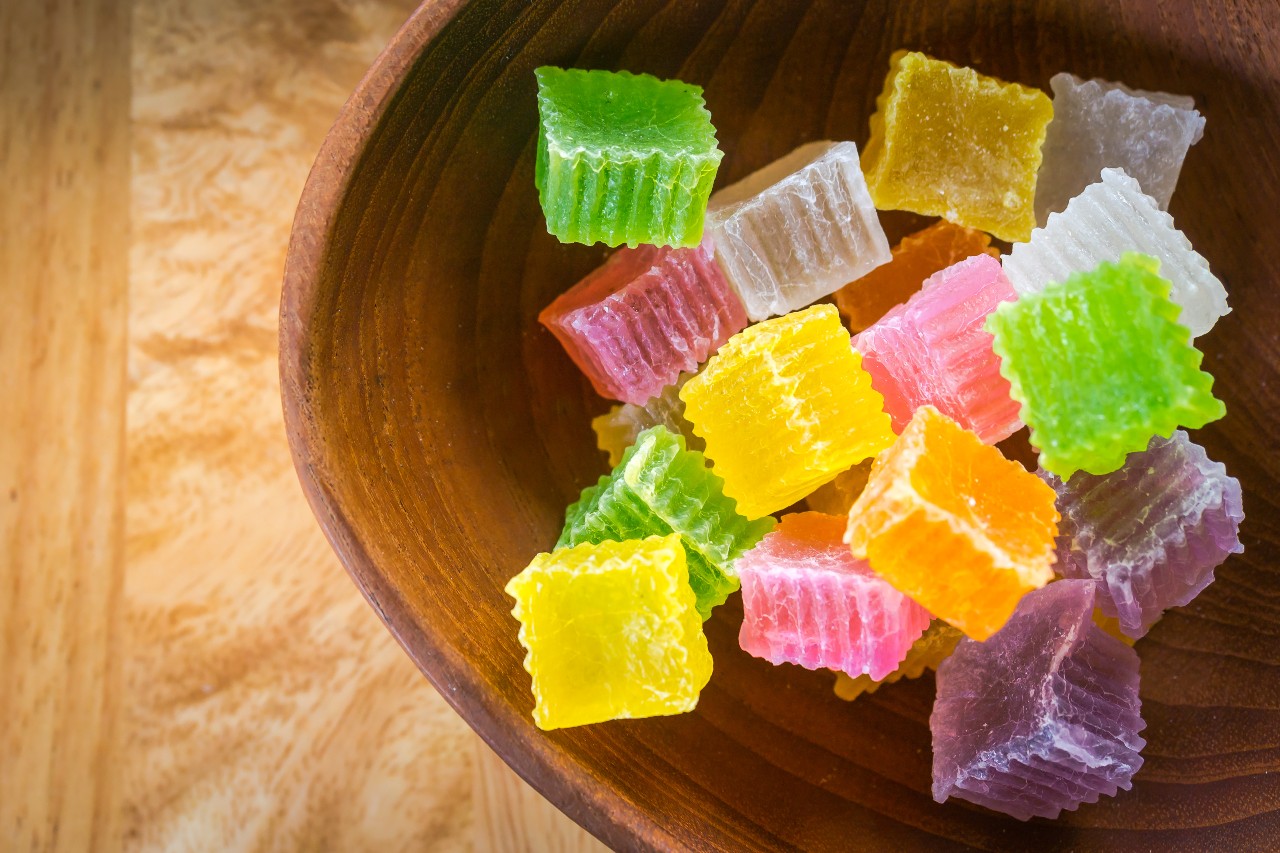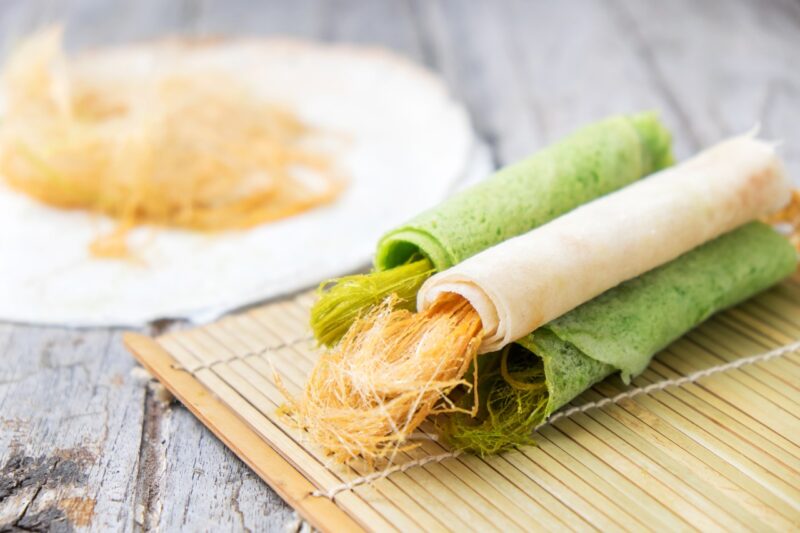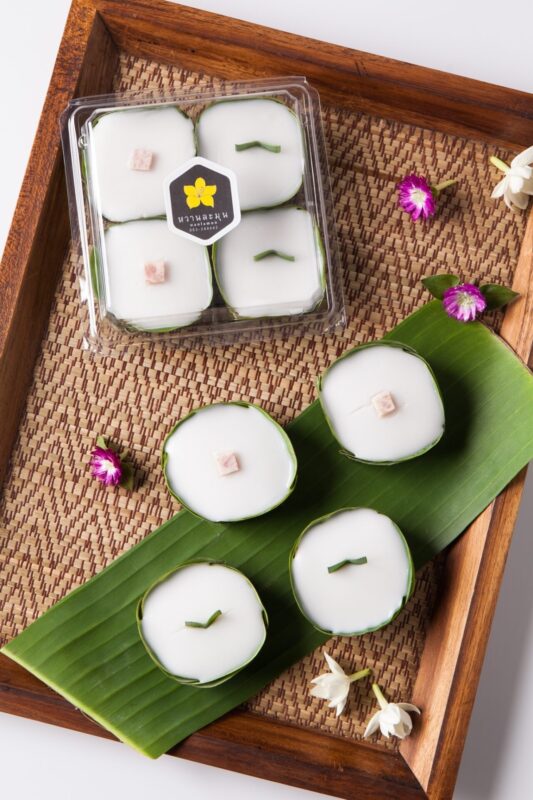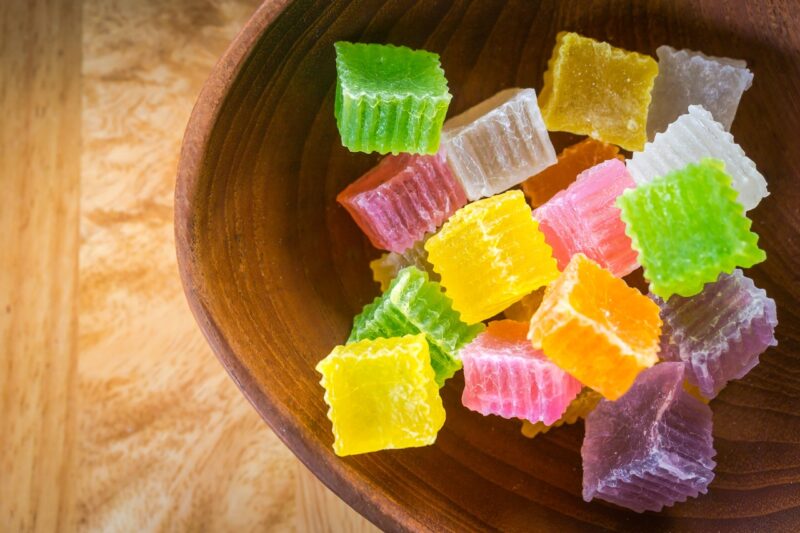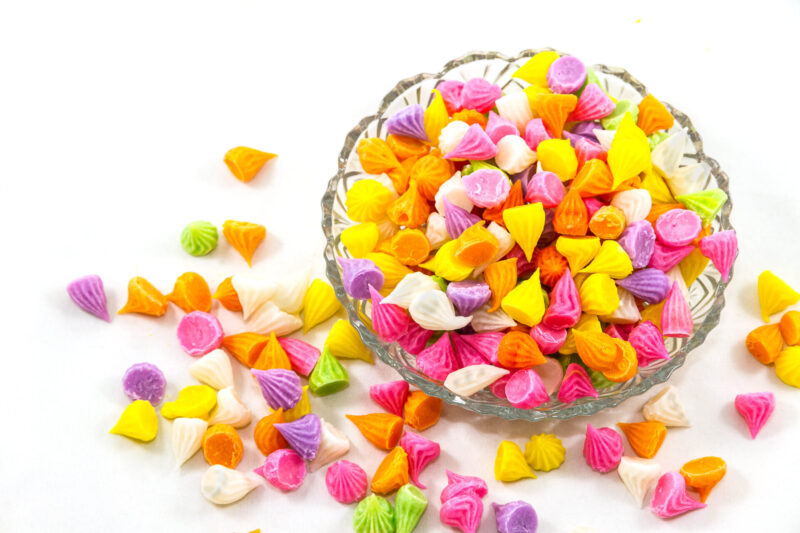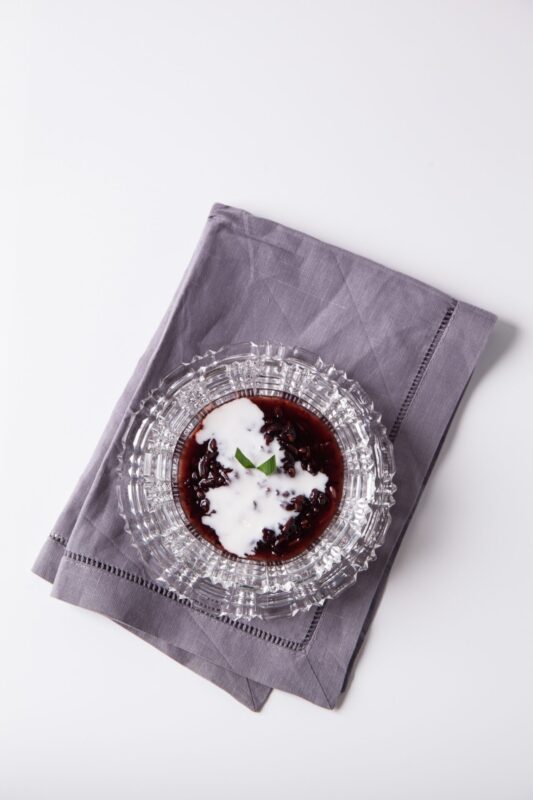When it comes to dessert, Thailand offers a rich variety in all sorts of textures, shapes and sizes to satisfy your sweet cravings. Sure, mango with sticky rice reigns at the top, but look further and you’ll discover there’s so much more to drool over, thanks to the country’s melting pot of cultures, with influences that range from Portugal to India. Here are some lesser-known local picks that you can easily find at any food market the next time you’re looking for a sweet fix.
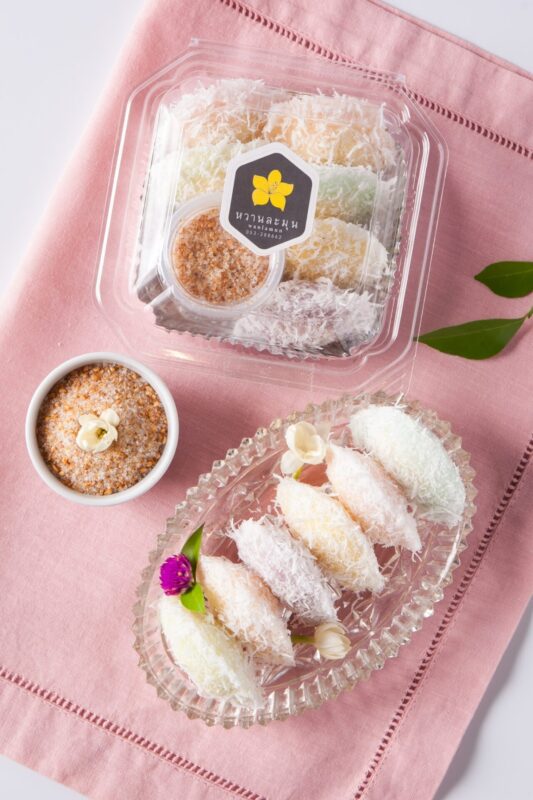
Tua Pab (Mung bean dumplings)
Inexpensive and generally found at all local food markets, tua pab doesn’t seem to get as much international attention as other more photogenic Thai desserts. However, it’s no less delicious and, because you can control how sweet you want it to be, it’s something you can easily enjoy every day. Shaped like a hyacinth bean (after which the dessert is named), these bite-sized snacks are made of coconut-coated sticky rice dough with a lightly flavored steamed mung bean filling. Pile on as much toasted sesame and sugar as you like before eating. Try the meticulously made and dainty traditional tua pab at Wanlamun dessert shop, which has branches in both Bangkok and Chiang Mai.


